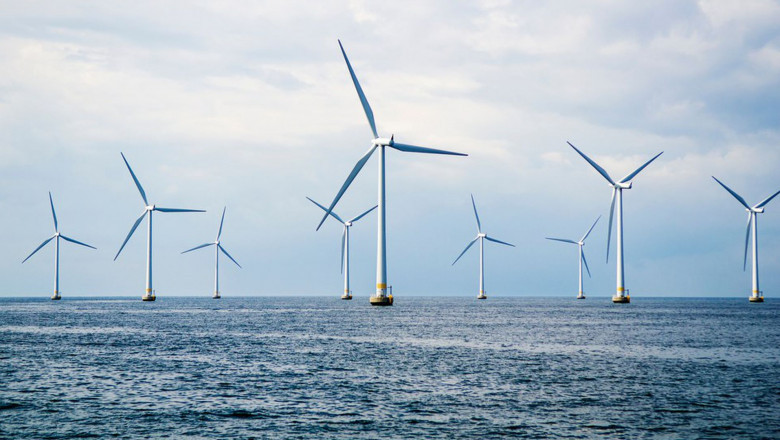views
The offshore wind energy market is rapidly evolving, playing a pivotal role in the transition to a cleaner, more sustainable energy future. With governments, investors, and environmentalists pushing for carbon neutrality, offshore wind power is experiencing unprecedented growth. However, this promising sector is shaped by a variety of impacting factors that determine its trajectory, competitiveness, and long-term sustainability.
1. Government Policies and Regulatory Frameworks
One of the most significant factors affecting the offshore wind market is governmental policy. Countries that offer favorable subsidies, tax incentives, and long-term support for renewable energy attract higher investments and faster project development. For instance, the European Union and countries like the UK, Germany, and Denmark have implemented supportive frameworks that have positioned them as leaders in offshore wind.
Conversely, regulatory uncertainty or policy shifts can delay or derail projects. Permitting procedures, environmental assessments, and grid access regulations vary significantly between regions, affecting development timelines and costs.
2. Technological Advancements and Innovation
Technology is a driving force behind the growth and cost reduction in offshore wind energy. Advances in turbine design, including larger rotor diameters and higher capacity machines, have significantly improved efficiency and output. Floating wind turbines, in particular, are expanding opportunities in deeper waters that were previously inaccessible.
Additionally, innovations in digital monitoring, predictive maintenance, and grid integration are enhancing operational efficiency and minimizing downtime. As technology evolves, offshore wind is becoming increasingly competitive with fossil fuel and other renewable energy sources.
3. Investment and Financing Trends
The capital-intensive nature of offshore wind projects requires significant investment from both public and private sectors. The availability of green finance, institutional investment, and public-private partnerships plays a critical role in project development. In recent years, there has been a surge in ESG (Environmental, Social, and Governance)-focused investments, further boosting funding for offshore wind initiatives.
Risk perception and return on investment also influence financing. Political stability, clear regulatory pathways, and market predictability reduce risk and attract long-term capital. Insurance, credit guarantees, and innovative financial instruments help de-risk large-scale projects.
4. Environmental and Social Considerations
Environmental impact assessments (EIAs) are essential components of offshore wind project planning. Projects must account for marine biodiversity, fishery impacts, bird migration patterns, and noise pollution. Developers must strike a balance between maximizing energy generation and minimizing ecological disruption.
Community engagement is also critical. Coastal communities often express concerns about visual impact, tourism effects, and local employment opportunities. Transparent communication, inclusive planning, and community benefit programs can help secure local support and smooth project implementation.
5. Supply Chain and Infrastructure Development
A well-developed supply chain is vital to the success of the offshore wind energy market. This includes manufacturing capabilities for turbines, foundations, cables, and substations, as well as port infrastructure and specialized vessels for installation and maintenance.
Bottlenecks in the supply chain can cause project delays and cost overruns. Global supply chain disruptions, such as those caused by geopolitical tensions or pandemics, have highlighted the need for more resilient and localized supply networks.
Furthermore, grid infrastructure plays a pivotal role. Offshore wind farms require robust transmission systems to deliver electricity to onshore grids. Grid capacity, interconnection capabilities, and energy storage solutions are key to ensuring reliability and efficiency.
6. Global Market Dynamics and Competition
The global offshore wind market is witnessing increasing competition, with new players entering the field. While Europe remains a stronghold, countries like China, the United States, South Korea, and Taiwan are investing heavily in offshore wind infrastructure.
This growing competition drives innovation, lowers costs, and encourages strategic alliances among energy companies, developers, and governments. At the same time, geopolitical issues and international trade policies can influence supply chains and market access.






















Comments
0 comment